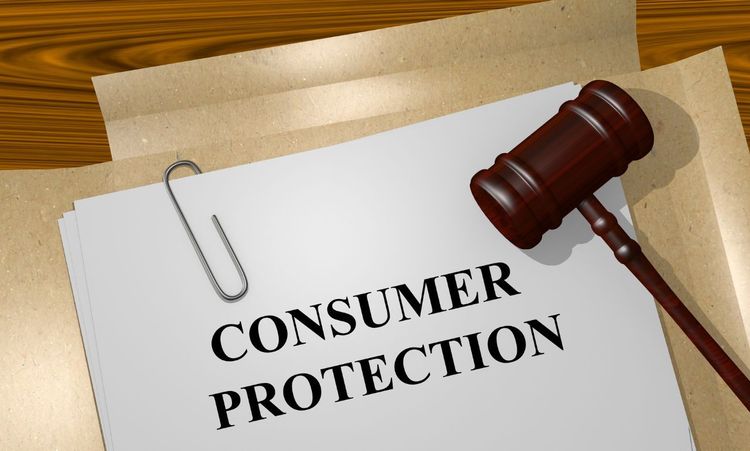Predatory lending isn't just a financial issue — it's a human one. Every year, thousands of people borrow money to handle emergencies, cover bills, or simply make it to the next paycheck. Then, instead of relief, they find themselves stuck in a cycle of fees, penalties, and mounting stress.
That's the cruel reality behind payday loans and other predatory lending practices. What seems like a quick fix often becomes a financial trap that's hard to escape.
This is where consumer protection laws come into play. They exist to keep lending fair, honest, and transparent — making sure that lenders play by the rules and borrowers aren't left hanging out to dry.
But how do these laws actually work? What makes them so crucial in protecting everyday people from predatory debt cycles? Let's break down the problem, the protections, and what the future holds for fair lending.
Unmasking Predatory Lending and the Role of Law
Predatory lending is a business model built on desperation. These lenders often target people who are struggling — individuals with limited savings, low credit scores, or financial emergencies. The loans are sold as easy, fast, and convenient. What they don't advertise is the cost.
Hidden fees, outrageous interest rates, and confusing terms leave borrowers paying far more than they ever received. Before they know it, one small loan becomes a series of debts that never seem to end.
That's where consumer protection laws come in. They're not just paperwork or policies — they're safeguards designed to protect people from financial harm. Laws such as the Truth in Lending Act (TILA) require lenders to disclose loan terms clearly. Meanwhile, the Dodd-Frank Act gives regulators power to crack down on lenders who use deceitful or abusive practices.
The Consumer Financial Protection Bureau (CFPB) enforces these laws, making sure companies play fair. Without this oversight, payday lenders would continue exploiting consumers unchecked — turning financial relief into financial ruin.
Defining the Threat
Predatory lending thrives in areas of financial vulnerability. These loans are often marketed as a “lifeline” for people who can't qualify for traditional bank credit. But that lifeline comes with hooks.
Most payday loans carry annual percentage rates (APRs) that can soar above 400%, according to the Center for Responsible Lending. That means a $500 loan could easily turn into a $1,000 debt within a few months.
Many borrowers don't realize how quickly fees add up. They renew their loans repeatedly just to stay afloat, often paying more in interest and costs than the amount they originally borrowed.
This cycle doesn't just drain bank accounts — it destroys financial confidence. Borrowers often feel trapped, ashamed, and powerless. That emotional toll is why legal protection matters as much as economic regulation.
Why Consumer Protection is Critical for Borrowers in the Cycle of Debt
When people fall behind on payday loans, the consequences can be severe. Missed payments can result in additional fees, collection calls, and even wage garnishment. Suddenly, what started as a $300 loan snowballs into an unmanageable debt that can take months — or even years — to repay.
Consumer protection laws act like a safety net. They require lenders to follow fair lending practices, disclose all fees up front, and avoid offering loans that are impossible to repay. Some states even limit the number of times a borrower can renew or roll over a loan.
For example, after the CFPB introduced rules in 2017, several states implemented “cooling-off” periods to prevent borrowers from immediately taking another payday loan after repaying one. These measures cut down repeat borrowing and helped thousands of people escape the debt trap.
Without such laws, payday lending would remain a legal form of exploitation — one that preys on those least able to fight back.
The Nature of Predatory Lending and Payday Loans
Predatory lending doesn't always wear the same mask. It appears as payday loans, car title loans, refund anticipation loans, and even personal installment loans that may seem legitimate at first glance.
Payday loans, however, are hazardous due to the rapidity with which they can pull borrowers into debt. The process is deceptively simple: you write a post-dated check or authorize an automatic withdrawal from your next paycheck. When payday comes, the lender takes their money — and if you can't afford it, you borrow again.
This never-ending cycle benefits only one side — the lender's. Their profits depend on borrowers renewing loans, not repaying them. Consumer protection laws aim to disrupt this model by ensuring loans are fair, transparent, and based on genuine repayment ability.
Characteristics of Predatory Lending Practices
You can usually spot predatory lending if you know what to look for. These lenders often:
- Charge excessively high interest rates.
- Hide important terms in fine print.
- Add fees that aren't disclosed upfront.
- Use aggressive or misleading advertising.
A 2022 FTC investigation found that several online lenders charged “processing fees” that effectively doubled the cost of the loan — fees that were never disclosed to borrowers before they signed. That's precisely the kind of deception consumer protection laws are designed to stop.
Transparency isn't just good ethics — it's the law. Lenders must clearly explain costs, interest rates, and repayment terms. Anything less is a violation of federal standards.
The State Landscape
Not all states treat payday lending the same way. Some, such as New York, New Jersey, and Georgia, have completely outlawed payday loans. Others, such as Texas and Nevada, still permit them but impose various restrictions on their operation.
This creates a patchwork of protections. Borrowers in one state may enjoy strong safeguards, while those in another remain exposed to risky lending practices.
Take Colorado, for example. In 2010, the state passed laws requiring longer loan terms and capping interest rates and fees. The result? Fewer borrowers fell into repeat debt cycles, and default rates dropped significantly. That's proof that regulation, when done right, actually works.
Addressing Evasive Tactics
Predatory lenders rarely give up quietly. When new laws shut one door, they find another way in. Many have shifted their operations online or partnered with out-of-state and tribal entities to avoid regulation.
Some lenders claim “tribal immunity,” arguing that because they operate through sovereign tribal nations, they're not bound by state lending laws. Others move offshore or change business names every few months to escape oversight.
Regulators are fighting back. The CFPB, FTC, and several state attorneys general have sued lenders that use these evasive tactics. Their message is clear: no one should be able to exploit consumers simply because they found a loophole.
Online Lending and Internet Lenders
The rise of online lending has revolutionized the lending industry. On the one hand, it offers accessibility and speed. On the other hand, it has given predatory lenders a digital disguise.
Many online lenders market themselves with professional websites and instant approval systems. Yet behind that convenience, some hide sky-high interest rates, unauthorized withdrawals, and data misuse.
The Federal Reserve's 2023 Online Lending Report revealed that complaints about hidden fees and unauthorized charges rose more than 25% in just one year. For many borrowers, these online loans are even harder to escape because the lenders operate outside U.S. jurisdiction.
Consumer protection in the digital age means more than regulation — it requires innovative technology and international cooperation to prevent digital predators from striking.
The Crucial Role of Ability-to-Repay (ATR) Determinations
One of the most critical consumer protection tools today is the Ability-to-Repay (ATR) rule. It's simple in concept: before lending money, lenders must ensure the borrower can actually afford to repay it.
Why Ability-to-Repay Standards are Essential
Think of it this way — would a car dealer sell you a car knowing you can't afford the payments? Ethical ones wouldn't. Yet for years, payday lenders did precisely that. They offered loans without checking income, expenses, or other debts.
ATR rules force lenders to act responsibly. They must verify a borrower's financial situation before approving a loan. This prevents reckless lending and ensures that financial products benefit people, rather than harm them.
The CFPB's Efforts to Mandate Ability-to-Repay Determinations
The CFPB's payday lending rule, introduced in 2017, made ATR assessments mandatory for most short-term loans. Although parts of it faced legal and political resistance, many states have adopted similar standards independently.
Where these rules exist, borrowers are less likely to default or fall into repeat borrowing. The takeaway is clear: lending should empower, not entrap.
Consumer Empowerment
Consumer protection isn't just about punishment; it's about empowerment. Laws can stop bad actors, but education helps people avoid them in the first place.
Organizations such as the National Consumer Law Center (NCLC) and NeighborWorks America offer financial literacy programs that educate borrowers on how to read loan terms, identify scams, and develop healthy credit habits.
Technology also plays a growing role. Mobile apps now allow borrowers to compare loan offers, check lender legitimacy, and calculate repayment costs instantly. Knowledge really is financial power — and it's available at your fingertips.
Enforcement, Compliance, and Litigation
A law only matters if it's enforced. Thankfully, agencies like the CFPB, FTC, and state regulators are stepping up. In 2022 alone, the CFPB secured over $1.7 billion in relief for consumers harmed by illegal lending practices.
Litigation serves two purposes: it punishes bad behavior and serves as a warning to others not to follow suit. Lenders now face strict compliance audits and must maintain transparent data records.
The message from regulators is crystal clear: financial exploitation isn't innovation — it's a crime.
The Future of Consumer Protection
The lending world isn't static — and neither is the fight to protect borrowers. With fintech companies and AI-driven platforms entering the scene, new opportunities and risks are emerging.
Future consumer protection will depend on collaboration between governments, tech firms, and financial institutions. We need more intelligent systems that can spot predatory behavior early and adapt to new digital lending models.
Fair lending isn't just a regulatory goal. It's a moral one. Borrowers deserve not just access to credit, but access to credit that helps them grow, not sink.
Conclusion
Predatory lending feeds on confusion and desperation. Consumer protection laws cut through that fog with fairness, transparency, and accountability. They ensure that when people borrow, they do so safely — without risking their financial future.
Payday loans may promise quick solutions, but consumer protection laws offer something far better: long-term stability and the freedom to move forward without fear of financial hardship.
When laws protect people, money becomes a tool — not a trap.




